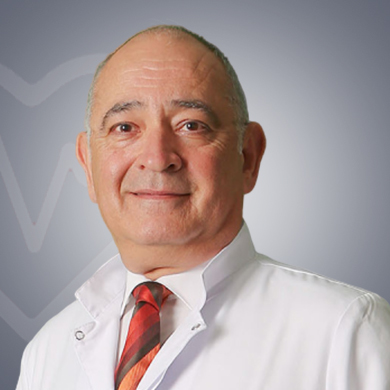Dr. Hayrettin Barbaros K?noglu is one of the finest Heart Specialist in Turkey. He is an experienced Cardiac Surgeon in the Turkey. The Medical practitioner has been associated with various reputed hospitals in the Turkey. The physician is currently working as a Cardiac Surgeon, I.A.U VM Medical Park Florya Hospital, Turkey. The doctor is a well-reputed and sought after medical expert and is
- Primary and Secondary Education: Galatasaray High School
- Higher Education: 1975-1981 - Istanbul University Edirne Faculty of Medicine,
- Medical Specialty Education: 1984 - 1989 - Istanbul University Cardiology Institute - Haseki
qualified. Dr. Hayrettin Barbaros K?noglu has been associated with many hospitals over the course of his illustrious and experienced career.
The hospitals include:
- 1989 - 1991 - Compulsory Service After Expertise: Koşuyolu Heart and Research Hospital
- 1992- 1996 - Cardiology Institute Cardiovascular Surgery Yard. Assoc.
- 1993 - 1994 - Advanced training in Coronary Artery Surgery, Valve Repair Procedures, Surgical Techniques in Large Vascular Aneurysms: OLV Zikenhause - Aalst / Belgium
- 1997 - Cardiology Institute Cardiovascular Surgery US Appointment to Associate Professorship
- 1998- 1999 - Upper education on Surgical Intervention Techniques in Complex Congenital Heart Anomalies: Marie Lanne- Longue Hospital - Paris
- September 2013 - Professorship: Kemeburgaz University Faculty of Medicine
Dr. Hayrettin Barbaros K?noglu has more than 31 Years of clinic experience. The Clinician specializes in and performs the following surgeries:
- Bentall Procedure
- CABG - Redo
- Cardiac Valve Replacement
- Coronary Artery Bypass Grafting (CABG)
- Heart Double Valve Replacement
- Heart Port Surgery
- VSD Closure / Repair (Adult)
- Cardiac Sciences
Qualification
- Primary and Secondary Education: Galatasaray High School
- Higher Education: 1975-1981 - Istanbul University Edirne Faculty of Medicine,
- Medical Specialty Education: 1984 - 1989 - Istanbul University Cardiology Institute - Haseki
Past Experiences
- 1989 - 1991 - Compulsory Service After Expertise: Koşuyolu Heart and Research Hospital
- 1992- 1996 - Cardiology Institute Cardiovascular Surgery Yard. Assoc.
- 1993 - 1994 - Advanced training in Coronary Artery Surgery, Valve Repair Procedures, Surgical Techniques in Large Vascular Aneurysms: OLV Zikenhause - Aalst / Belgium
- 1997 - Cardiology Institute Cardiovascular Surgery US Appointment to Associate Professorship
- 1998- 1999 - Upper education on Surgical Intervention Techniques in Complex Congenital Heart Anomalies: Marie Lanne- Longue Hospital - Paris
- September 2013 - Professorship: Kemeburgaz University Faculty of Medicine


